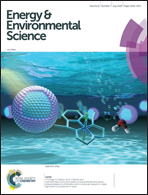The future of solar fuels: when could they become competitive?†
Abstract
Solar energy driven processes with H2O and CO2 as basic feedstocks can produce “solar fuels” that could substitute their fossil based counterparts. This article summarizes the main findings of a techno-economic analysis of systems that can generate different types of fuels with renewable energy as starting point. These “renewable fuels” could potentially play a key role in future energy systems, both as a storage medium in the power sector and as an energy carrier in e.g. the transport sector, or deliver fundamental building blocks for the chemical industry. We determine whether, how, and when renewable fuels might become competitive alternatives for fossil fuels. The technologies required to produce renewable fuels are analyzed by the application of learning curves associated with individual system components. We thereby make projections for possible decreases in investment costs and reductions in fuel production costs. In an optimistic scenario we find that competitivity could be reached between 2025 and 2048 for all renewable energy production pathways that we investigate, for hydrogen, syngas, methanol, and diesel. Two techniques yield break-even costs before 2050 even in a conservative base case scenario: H2 production through electrolysis and diesel production by Fischer–Tropsch synthesis. Both processes use solid oxide electrolysis, which profits from rapid cost reductions and high efficiency.



 Please wait while we load your content...
Please wait while we load your content...